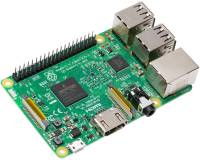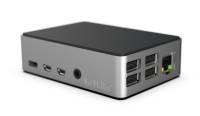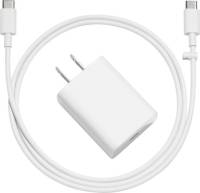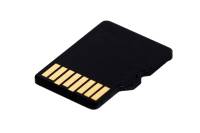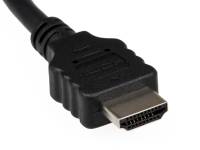This is an old revision of the document!
Raspberry Pi
A Raspberry Pi is a brand of “single board computer” that can connect using HDMI, is fairly inexpensive, and is used by students and hobbyists for various electronics projects. Over the years it has turned out to be a useful device for a number of unexpected areas, including being used along side HDHomeRun products. There are multiple models of the Raspberry Pi, but most of them will function well as an HDHomeRun client or “streaming box” for TVs, and the latest version (the “Pi 4”) can also work as a DVR storage device for HDHomeRun DVR service.
Pi as a streamer for TV sets
Requirements
In addition to the HDHomeRun device and a network connection (ethernet recommended, 802.11AC wireless may work as well), here is what you will need. As most Raspberry Pi products are sold by themselves, you will need to make sure you have the right parts for a complete system:
- The Raspberry Pi itself. We recommend using at least a Raspberry Pi 2 or later, and a “model B” type so that you have the option of a wired ethernet port. This will include the Raspberry Pi models: 2B, 3B, 3B+, and 4B.
- The Raspberry Pi 4B has options for different amounts of RAM. Any amount is fine, even the smallest 1GB RAM version.
- The 3B+ and 4B may work well over wi-fi, rather than using ethernet, as they have support for 802.11AC wireless.
- Model A and Zero versions of Pi's may work if using a fast enough USB wifi adapter, or a USB ethernet adapter. The built-in wireless from the Zero W and 3B (non plus) will not be fast enough for most HDHomeRun devices, unless using the HDHomeRun EXTEND.
- Pi 1 and Pi Zero models will be slower, due to them using the oldest processor in the Pi family, but can also be used as viewers if you don't mind the interface not loading as fast.
- A case for the Raspberry Pi.
- A power supply. How good of a power supply will depend on the generation of Pi being used, and you may have an old phone charger that will serve just fine as a power supply. All models except for the 4B will use a micro USB port. The 4B will use USB-C. The Raspberry Pi Foundation also sells an official power supply if you are unsure of what to buy.
- A micro SD card. If you don't have a spare laying around from some other device, you should be okay with getting most brand-name cards of at least 2 GB or more. If using a Pi 1B (non plus) version, you may need a micro SD to regular SD card adapter, but all other models will use micro SD.
- HDMI cable for your TV.
- Most Raspberry Pi's (all of the 1, 2, and 3 models) will use a normal HDMI cable.
- The Raspberry Pi 4 will require a “micro-HDMI to HDMI cable”.
- The Raspberry Pi Zero will use a “mini-HDMI to HDMI cable”.
- A remote control of some kind.
- If your TV supports what is known as “HDMI CEC” then you won't need a separate remote control. This is a feature of the TV that allows one remote to control other devices, such as bluray players, streaming boxes, or even Raspberry Pis.
- An inexpensive “Android” remote with USB receiver dongle (or bluetooth, if using a Pi with build-in bluetooth), which can be found in the normal places (eBay, Newegg, Amazon, etc) normally operate as as a remote with no special software needed. These remotes are offered under numerous brand names and model types, but typically work by emulating a wireless keyboard, but in the shape of a typical remote control. They may also feature “air mouse” features, but a mouse will not be required for this set up.
- Since we are going to be using the Kodi media software for this set up, you can also use an Android or iOS smart phone or tablet as a remote control: https://kodi.wiki/view/Smartphone/tablet_remotes
- Additional advanced options can be found here: https://kodi.wiki/view/Raspberry_Pi#Remote_controls
Installing the software
Pi 4 as DVR storage
Requirements
As most Raspberry Pi products are sold by themselves, you will need to make sure you have the right parts for a complete system.
Installing the software
sudo apt install usbmount enter password sed -i 's/PrivateMounts=yes/PrivateMounts=no/g' /lib/systemd/system/systemd-udevd.service mkdir /home/pi/hdhomerun/ mkdir /media/usb0/hdhomerun_dvr_pi/ echo 'RecordPath=/media/usb0/hdhomerun_dvr_pi/' >/home/pi/hdhomerun/hdhomerun.conf curl http://download.silicondust.com/hdhomerun/hdhomerun_record_linux >/home/pi/hdhomerun/hdhomerun_record chmod +x /home/pi/hdhomerun/hdhomerun_record /home/pi/hdhomerun/hdhomerun_record start
